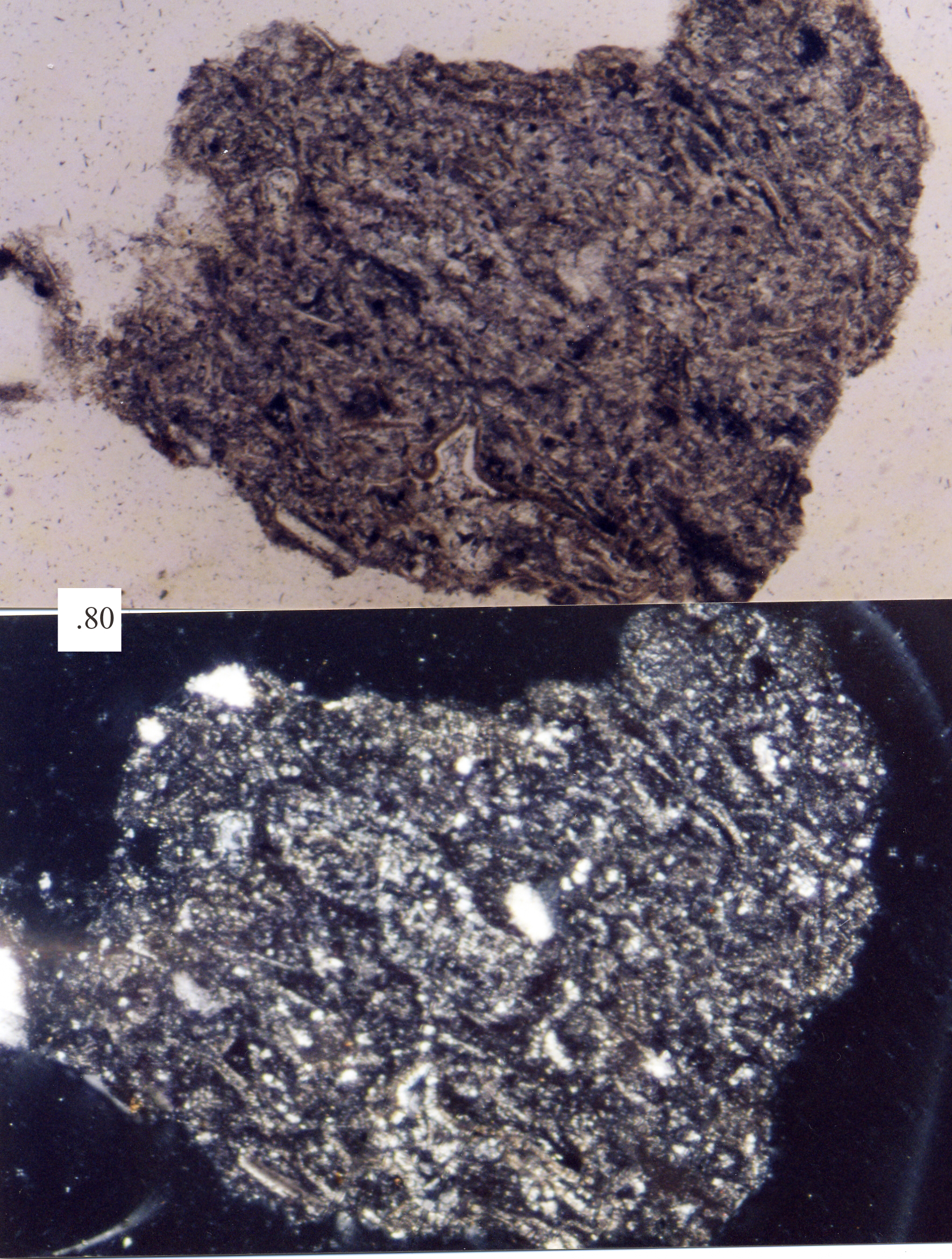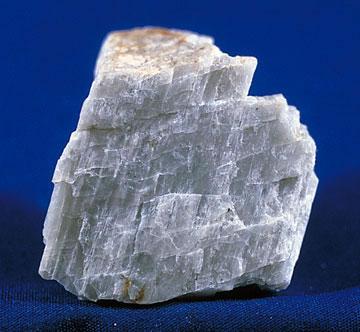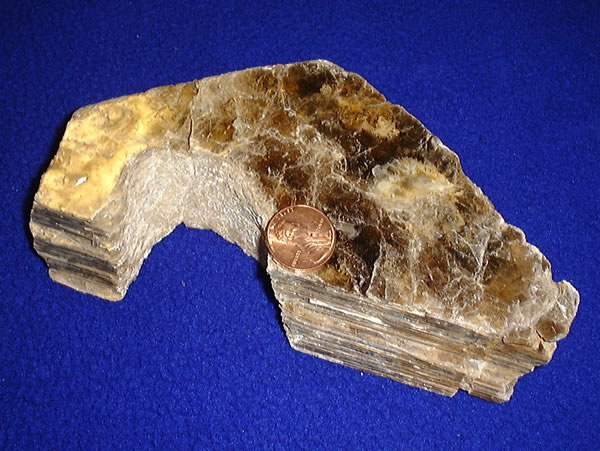|
Granites
Granite ( ) is a coarse-grained ( phaneritic) intrusive igneous rock composed mostly of quartz, alkali feldspar, and plagioclase. It forms from magma with a high content of silica and alkali metal oxides that slowly cools and solidifies underground. It is common in the continental crust of Earth, where it is found in igneous intrusions. These range in size from dikes only a few centimeters across to batholiths exposed over hundreds of square kilometers. Granite is typical of a larger family of ''granitic rocks'', or '' granitoids'', that are composed mostly of coarse-grained quartz and feldspars in varying proportions. These rocks are classified by the relative percentages of quartz, alkali feldspar, and plagioclase (the QAPF classification), with true granite representing granitic rocks rich in quartz and alkali feldspar. Most granitic rocks also contain mica or amphibole minerals, though a few (known as leucogranites) contain almost no dark minerals. Granite is nearly alw ... [...More Info...] [...Related Items...] OR: [Wikipedia] [Google] [Baidu] |
Leucogranite
Leucogranite is a light-colored, granitic, igneous rock containing almost no dark minerals. Leucogranites have been reported from a variety of orogenies involving continental collisions. Examples include the Black Hills (Trans-Hudson orogeny of Proterozoic age),Peter I. Nabelek and Mian Liu, ''Petrologic and thermal constraints on the origin of leucogranites in collisional orogens,'' Transactions of the Royal Society of Edinburgh: Earth Sciences, 95, 73–85, 2004 the Blue Ridge [...More Info...] [...Related Items...] OR: [Wikipedia] [Google] [Baidu] |
Igneous Intrusion
In geology, an igneous intrusion (or intrusive body or simply intrusion) is a body of intrusive igneous rock that forms by crystallization of magma slowly cooling below the surface of the Earth. Intrusions have a wide variety of forms and compositions, illustrated by examples like the Palisades Sill of New York and New Jersey; the Henry Mountains of Utah; the Bushveld Igneous Complex of South Africa; Shiprock in New Mexico; the Ardnamurchan intrusion in Scotland; and the Sierra Nevada Batholith of California. Because the solid country rock into which magma intrudes is an excellent insulator, cooling of the magma is extremely slow, and intrusive igneous rock is coarse-grained ( phaneritic). Intrusive igneous rocks are classified separately from extrusive igneous rocks, generally on the basis of their mineral content. The relative amounts of quartz, alkali feldspar, plagioclase, and feldspathoid is particularly important in classifying intrusive igneous rocks. Int ... [...More Info...] [...Related Items...] OR: [Wikipedia] [Google] [Baidu] |
Mineral
In geology and mineralogy, a mineral or mineral species is, broadly speaking, a solid substance with a fairly well-defined chemical composition and a specific crystal structure that occurs naturally in pure form.John P. Rafferty, ed. (2011): Minerals'; p. 1. In the series ''Geology: Landforms, Minerals, and Rocks''. Rosen Publishing Group. The Geology, geological definition of mineral normally excludes compounds that occur only in living organisms. However, some minerals are often biogenic (such as calcite) or organic compounds in the sense of chemistry (such as mellite). Moreover, living organisms often synthesize inorganic minerals (such as hydroxylapatite) that also occur in rocks. The concept of mineral is distinct from rock (geology), rock, which is any bulk solid geologic material that is relatively homogeneous at a large enough scale. A rock may consist of one type of mineral or may be an aggregate (geology), aggregate of two or more different types of minerals, spaci ... [...More Info...] [...Related Items...] OR: [Wikipedia] [Google] [Baidu] |
Magma
Magma () is the molten or semi-molten natural material from which all igneous rocks are formed. Magma (sometimes colloquially but incorrectly referred to as ''lava'') is found beneath the surface of the Earth, and evidence of magmatism has also been discovered on other terrestrial planets and some natural satellites. Besides molten rock, magma may also contain suspended crystals and volcanic gas, gas bubbles. Magma is produced by melting of the mantle (geology), mantle or the Crust (geology), crust in various tectonics, tectonic settings, which on Earth include subduction zones, continental rift (geology), rift zones, mid-ocean ridges and Hotspot (geology), hotspots. Mantle and crustal melts migrate upwards through the crust where they are thought to be stored in magma chambers or trans-crustal crystal mush, crystal-rich mush zones. During magma's storage in the crust, its composition may be modified by Fractional crystallization (geology), fractional crystallization, contaminati ... [...More Info...] [...Related Items...] OR: [Wikipedia] [Google] [Baidu] |
Felsic
In geology, felsic is a grammatical modifier, modifier describing igneous rocks that are relatively rich in elements that form feldspar and quartz.Marshak, Stephen, 2009, ''Essentials of Geology,'' W. W. Norton & Company, 3rd ed. It is contrasted with mafic rocks, which are richer in magnesium and iron. Felsic refers to silicate minerals, magma, and rock (geology), rocks which are enriched in the lighter elements such as silicon, oxygen, aluminium, sodium, and potassium. Molten felsic magma and lava is more viscosity, viscous than molten mafic magma and lava. Felsic magmas and lavas have lower temperatures of melting and solidification than mafic magmas and lavas. Felsic rocks are usually light in color and have specific gravity, specific gravities less than 3. The most common felsic rock is granite. Common felsic minerals include quartz, muscovite, orthoclase, and the sodium-rich plagioclase feldspars (albite-rich). Terminology Acid rock In modern usage, the term ''acid rock ... [...More Info...] [...Related Items...] OR: [Wikipedia] [Google] [Baidu] |
Intrusive Rock
Intrusive rock is formed when magma penetrates existing rock, crystallizes, and solidifies underground to form ''Igneous intrusion, intrusions'', such as batholiths, dike (geology), dikes, Sill (geology), sills, laccoliths, and volcanic necks.Intrusive RocksIntrusive rocks accessdate: March 27, 2017.Igneous intrusive rocks, accessdate: March 27, 2017.Britannica.comintrusive rock , geology , Britannica.com accessdate: March 27, 2017. Intrusion is one of the two ways igneous rock can form. The other is extrusive rock, extrusion, such as a Types of volcanic eruptions, volcanic eruption or similar event. An intrusion is any body of intrusive igneous rock, formed from magma that cools and solidifies within the crust of the planet. In contrast, an ''extrusion'' consists of extrusive rock, formed above the surface of the crust. Some geologists use the term plutonic rock synonymously with intrusive rock, but other geologists subdivide intrusive rock, by crystal size, into coarse-grai ... [...More Info...] [...Related Items...] OR: [Wikipedia] [Google] [Baidu] |
Plagioclase Feldspar
Plagioclase ( ) is a series of tectosilicate (framework silicate) minerals within the feldspar group. Rather than referring to a particular mineral with a specific chemical composition, plagioclase is a continuous solid solution series, more properly known as the plagioclase feldspar series. This was first shown by the German mineralogist Johann Friedrich Christian Hessel (1796–1872) in 1826. The series ranges from albite to anorthite endmembers (with respective compositions NaAlSi3O8 to CaAl2Si2O8), where sodium and calcium atoms can substitute for each other in the mineral's crystal lattice structure. Plagioclase in hand samples is often identified by its polysynthetic crystal twinning or " record-groove" effect. Plagioclase is a major constituent mineral in Earth's crust and is consequently an important diagnostic tool in petrology for identifying the composition, origin and evolution of igneous rocks. Plagioclase is also a major constituent of rock in the highlands of ... [...More Info...] [...Related Items...] OR: [Wikipedia] [Google] [Baidu] |
Granitoid
A granitoid is a broad term referring to a diverse group of coarse-grained igneous rocks that are widely distributed across the globe, covering a significant portion of the Earth's exposed surface and constituting a large part of the continental crust. These rocks are primarily composed of quartz, plagioclase, and alkali feldspar. Granitoids range from plagioclase-rich tonalites to alkali-rich syenites and from quartz-poor monzonites to quartz-rich quartzolites. As only two of the three defining mineral groups (quartz, plagioclase, and alkali feldspar) need to be present for the rock to be called a granitoid, foid-bearing rocks, which predominantly contain feldspars but no quartz, are also granitoids. Nomenclature and classification The terms ''granite'' and ''granitic rock'' are often used interchangeably for granitoids; however, granite is just one particular type of granitoid. Granitoids are diverse. No classification system for granitoids can give a complete and unique ... [...More Info...] [...Related Items...] OR: [Wikipedia] [Google] [Baidu] |
QAPF Diagram
A QAPF diagram is a doubled-triangle plot diagram used to classify igneous rocks based on their mineralogy. The acronym QAPF stands for "quartz, alkali feldspar, plagioclase, feldspathoid (foid)", which are the four mineral groups used for classification in a QAPF diagram. The percentages (ratios) of the Q, A, P and F groups are normalized, i.e., recalculated so that their sum is 100%. Origin QAPF diagrams are created by the International Union of Geological Sciences (IUGS): ''Subcommission on the Systematics of Igneous Rocks'' as fostered by Albert Streckeisen (whence their alternative name: Streckeisen diagrams). Geologists worldwide use the diagrams in classifying igneous, especially plutonic rocks. Usage QAPF diagrams are mostly used to classify plutonic rocks ( phaneritic rocks), and can be used to classify volcanic rocks ( aphanitic rocks) if modal mineralogical compositions have been determined (for an example, see basalt). But QAPF diagrams are ''not used'' to cl ... [...More Info...] [...Related Items...] OR: [Wikipedia] [Google] [Baidu] |
Mica
Micas ( ) are a group of silicate minerals whose outstanding physical characteristic is that individual mica crystals can easily be split into fragile elastic plates. This characteristic is described as ''perfect basal cleavage''. Mica is common in igneous and metamorphic rock and is occasionally found as small flakes in sedimentary rock. It is particularly prominent in many granites, pegmatites, and schists, and "books" (large individual crystals) of mica several feet across have been found in some pegmatites. Micas are used in products such as drywalls, paints, and fillers, especially in parts for automobiles, roofing, and in electronics. The mineral is used in cosmetics and food to add "shimmer" or "frost". Properties and structure The mica group comprises 37 phyllosilicate minerals. All crystallize in the monoclinic system, with a tendency towards pseudohexagonal crystals, and are similar in structure but vary in chemical composition. Micas are translucent to opa ... [...More Info...] [...Related Items...] OR: [Wikipedia] [Google] [Baidu] |
Holocrystalline
Crystallinity refers to the degree of structural order in a solid. In a crystal, the atoms or molecules are arranged in a regular, periodic manner. The degree of crystallinity has a large influence on hardness, density, transparency and diffusion. In an ideal gas, the relative positions of the atoms or molecules are completely random. Amorphous materials, such as liquids and glasses, represent an intermediate case, having order over short distances (a few atomic or molecular spacings) but not over longer distances. Many materials, such as glass-ceramics and some polymers, can be prepared in such a way as to produce a mixture of crystalline and amorphous regions. In such cases, crystallinity is usually specified as a percentage of the volume of the material that is crystalline. Even within materials that are completely crystalline, however, the degree of structural perfection can vary. For instance, most metallic alloys are crystalline, but they usually comprise many independent ... [...More Info...] [...Related Items...] OR: [Wikipedia] [Google] [Baidu] |
Latin
Latin ( or ) is a classical language belonging to the Italic languages, Italic branch of the Indo-European languages. Latin was originally spoken by the Latins (Italic tribe), Latins in Latium (now known as Lazio), the lower Tiber area around Rome, Italy. Through the expansion of the Roman Republic, it became the dominant language in the Italian Peninsula and subsequently throughout the Roman Empire. It has greatly influenced many languages, Latin influence in English, including English, having contributed List of Latin words with English derivatives, many words to the English lexicon, particularly after the Christianity in Anglo-Saxon England, Christianization of the Anglo-Saxons and the Norman Conquest. Latin Root (linguistics), roots appear frequently in the technical vocabulary used by fields such as theology, List of Latin and Greek words commonly used in systematic names, the sciences, List of medical roots, suffixes and prefixes, medicine, and List of Latin legal terms ... [...More Info...] [...Related Items...] OR: [Wikipedia] [Google] [Baidu] |







